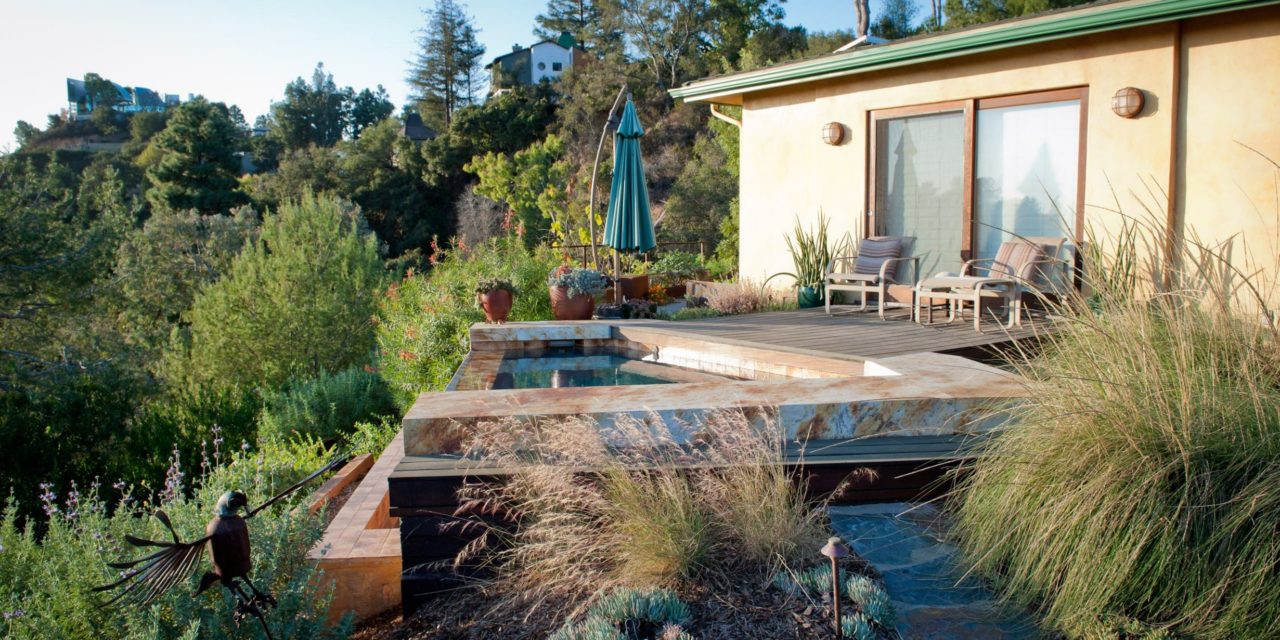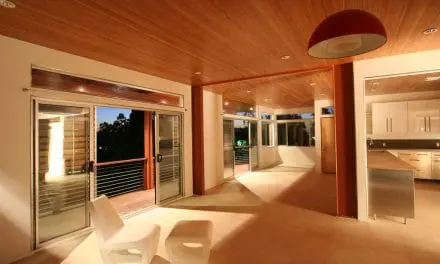All photos courtesy FormLA Landscaping
Relatively quickly, wildfires have gone from a seasonal to a nearly year-round danger, particularly in Western states. Where conditions are dry and fire is raging, burning embers can travel through the air, igniting one’s property even before evacuation orders are given and flames are still far away. Luckily, there’s a lot we can do with fire resistant landscaping. Deep-rooted native plants hold their moisture, “defensible space” creates a buffer zone around a home, and tree canopies can shield houses from those flying embers. But it takes expertise to employ all the tools in the wildfire resilience toolbox. Knowledgeable landscape firms can design “firewise” landscapes that protect individual homes or lay out plans for wildfire protection in communities.
Founded in 1997 by Kirk and Cassy Aoyagi, FormLA Landscaping provides full-service landscaping services with added expertise in fire resistant landscaping. And after evacuating for both the La Tuna Fire and Creek Fires in 2017, these landscaping professionals see mitigating wildfire danger as a personal mission. Since then, Cassy Aoyagi has worked with the US Green Building Council’s Los Angeles chapter (USGBC-LA) to develop fire risk reduction training programs, and FormLA’s work has been featured in publications from the Los Angeles Times and Sunset magazines to HGTV.
Each year, FormLA Landscaping helps its clients save over 10 million gallons of water annually and reduce lawn-care expenses substantially. FormLA creates attractive outdoor spaces using xeriscape principles: native plants, lawn alternatives, and smart irrigation strategies. The trick to fire resistant landscaping is to protect your home while sustainably beautifying its landscaping. “A fire-defensive landscape will actually leave us with the kind of lush, leafy, shady landscapes we most enjoy,” Cassy Aoyagi says.
Designing for the Long Term in Foothill Garden
This hillside property is susceptible to fast uphill-moving fire and inhibited fire department response. But the stone siding and tile roof are the most protective from fire. Gutters have wire-mesh covers to prevent dry leaves from igniting due to embers. It’s really embers, not flames and intense heat, that present the first and greatest danger to homes during wildfires. The windows are still a threat, especially if they’re wood-framed. But here too, wire-mesh screens can (in addition to keeping bugs out) reduce the risk of fire infiltration.
Outside the house, a patio and walkway give firefighters defensible space from which to operate. But the barbecue you may keep there, especially if gas-powered, can be dangerous. Why not keep it in a detached shed, if you have one? And you might reconsider that wood fence, or at least the portion that comes closest to the house. If you do use wood, be it here or on a deck, a slow-burning variety like ipé makes a more resilient choice.
Speaking of wood, Cassy Aoyagi calls attention to the line of mature trees at the top of the sloped property. “Tree canopies can capture embers before they reach a home.” The bigger, healthier, and more mature the tree, the more fire-defensive it will be. A well hydrated and dense canopy away from structures will provide protection. Meanwhile, native foliage like chaparral or yucca have deep roots that can help them recover after a fire; these also stabilize a hillside, helping prevent post-wildfire mudslides. Aoyagi also recommends smart irrigation systems that water plants at the root. Hydrating all plants on a property helps protect against fire danger. This is a crucial strategy to fighting wildfires with maintenance.
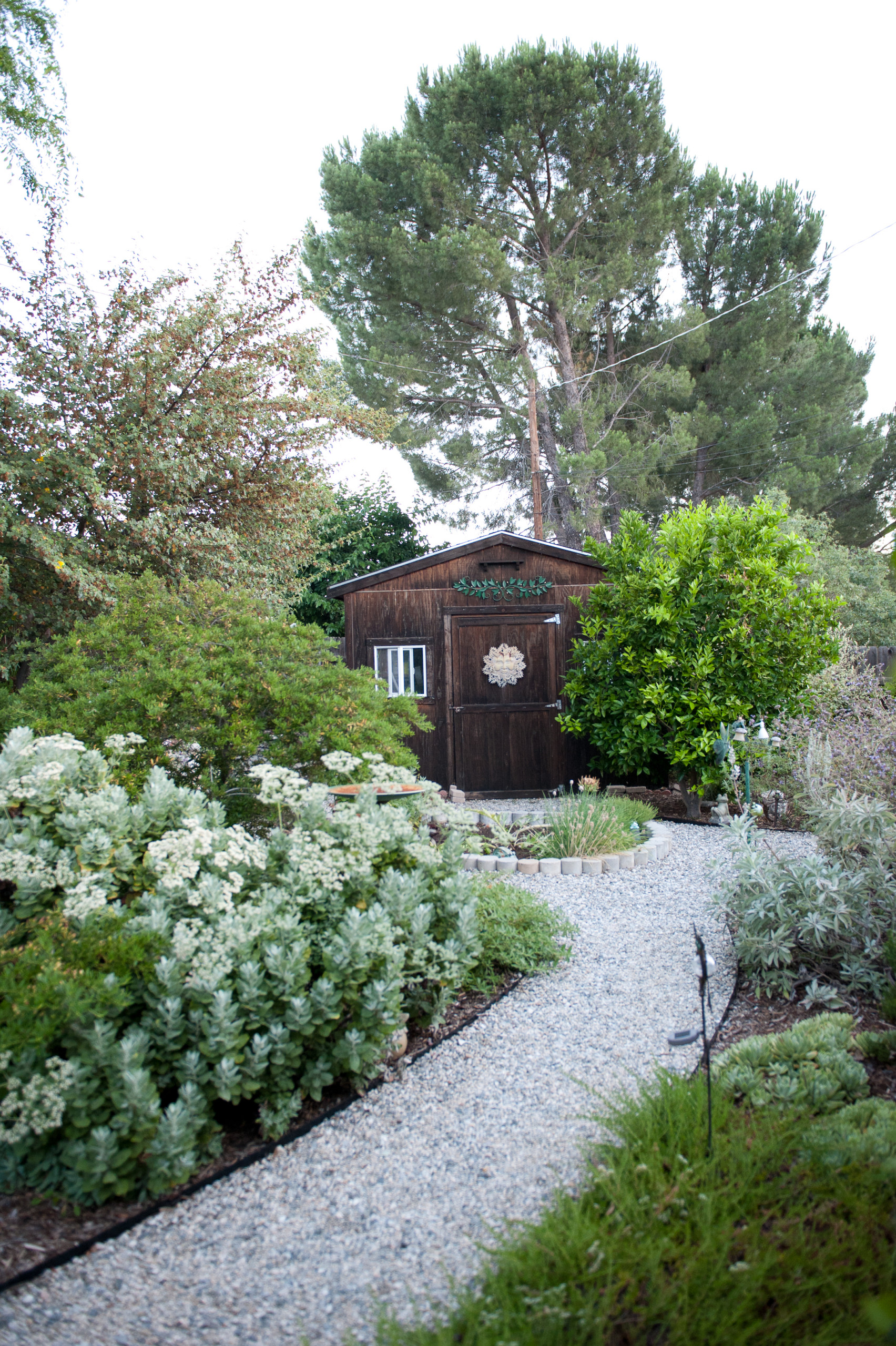

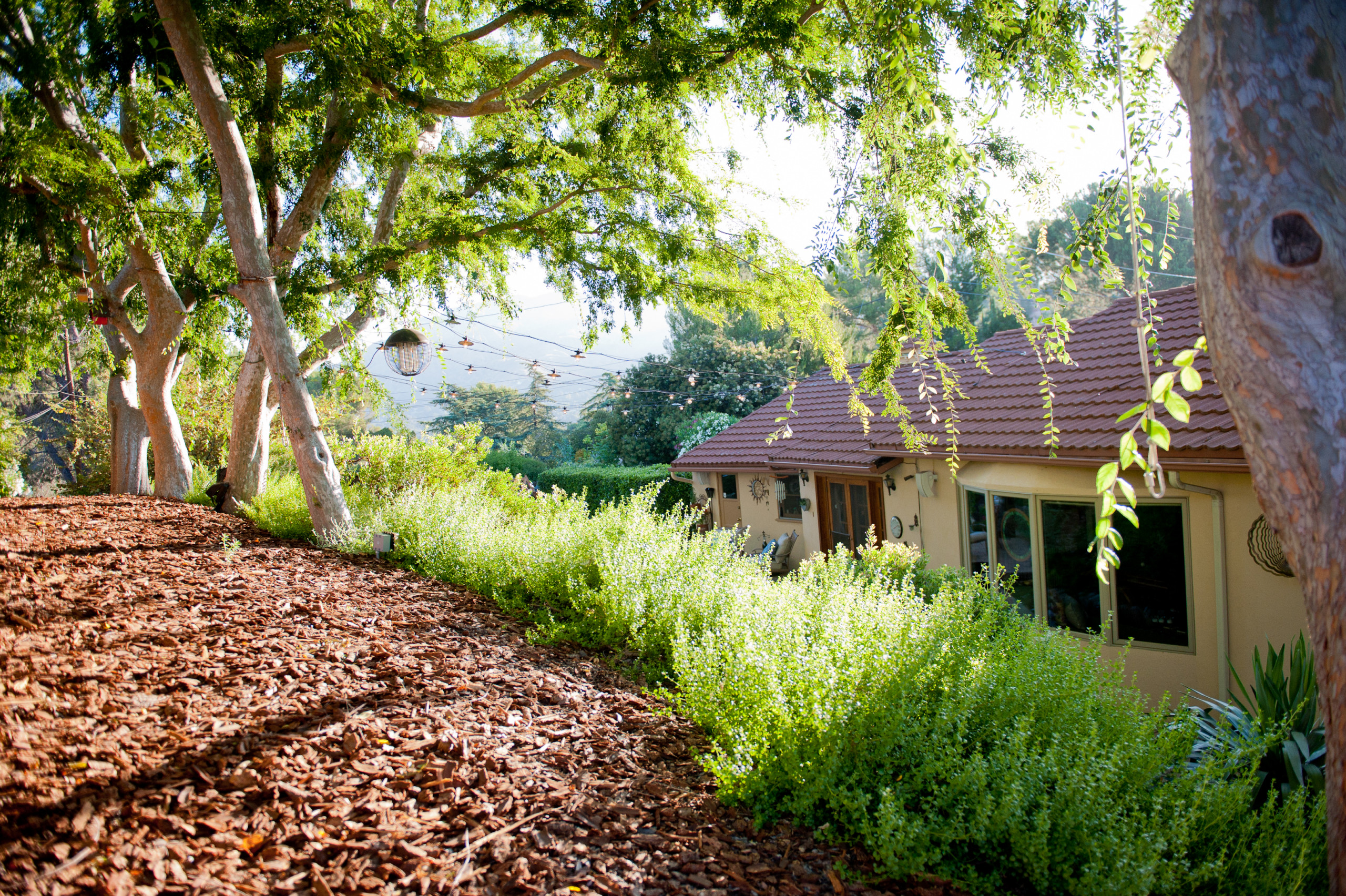
On the Defense in Mandeville Canyon
The fire danger begins before you can even see the house: a long sloping driveway that a fire truck may not be able to traverse, and a hillside that could burn quickly. “Getting any greenery to cover a slope is tough, let alone one this steep and made of bedrock. So we borrow from nature since she does it best, and integrate a combination of native species to optimize foliage coverage and keep out grasses that become fuels and carry fire fast,” Cassy Aoyagi explains. Her team used California lilac, chaparral yucca, and dwarf coyote brush for their deep, expansive root systems. These compare favorably to another popular choice, agave, which doesn’t have roots deep enough to help maintain slopes. As with the house in Sunland-Tujunga, mature live oaks and native chaparral further mitigate the risk.
The Mandeville Canyon homeowners enjoy outdoor art, but each piece is either glass or steel, to prevent fueling a fire. Ceramic pottery even serves a purpose, lining the hardscape patio and blocking potential embers. An elevated wood bench along the house’s floor-to-ceiling windows is made with ipé hardwood to reduce flammability, and a concrete fascia in front of the bench blocks rolling embers from getting under the deck.
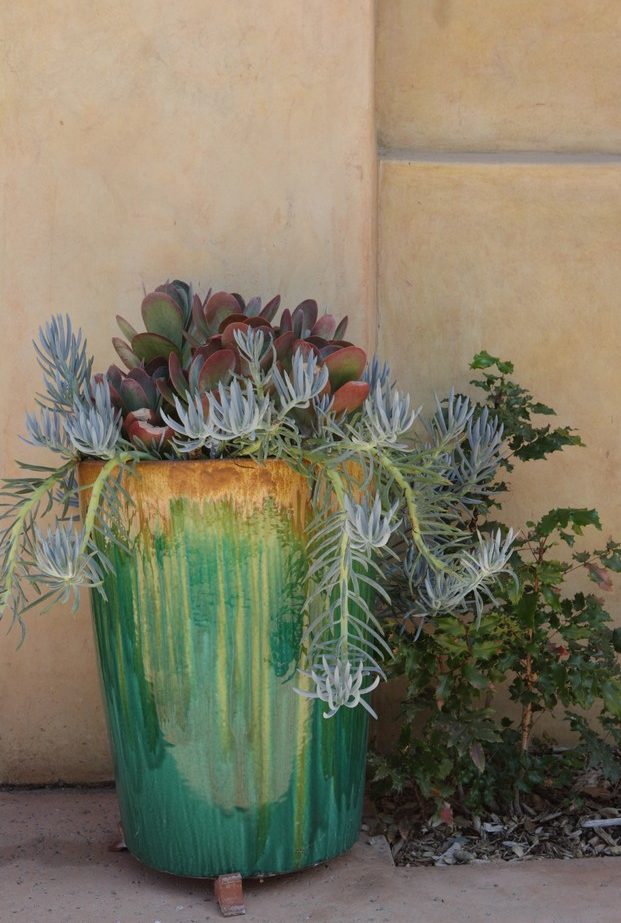
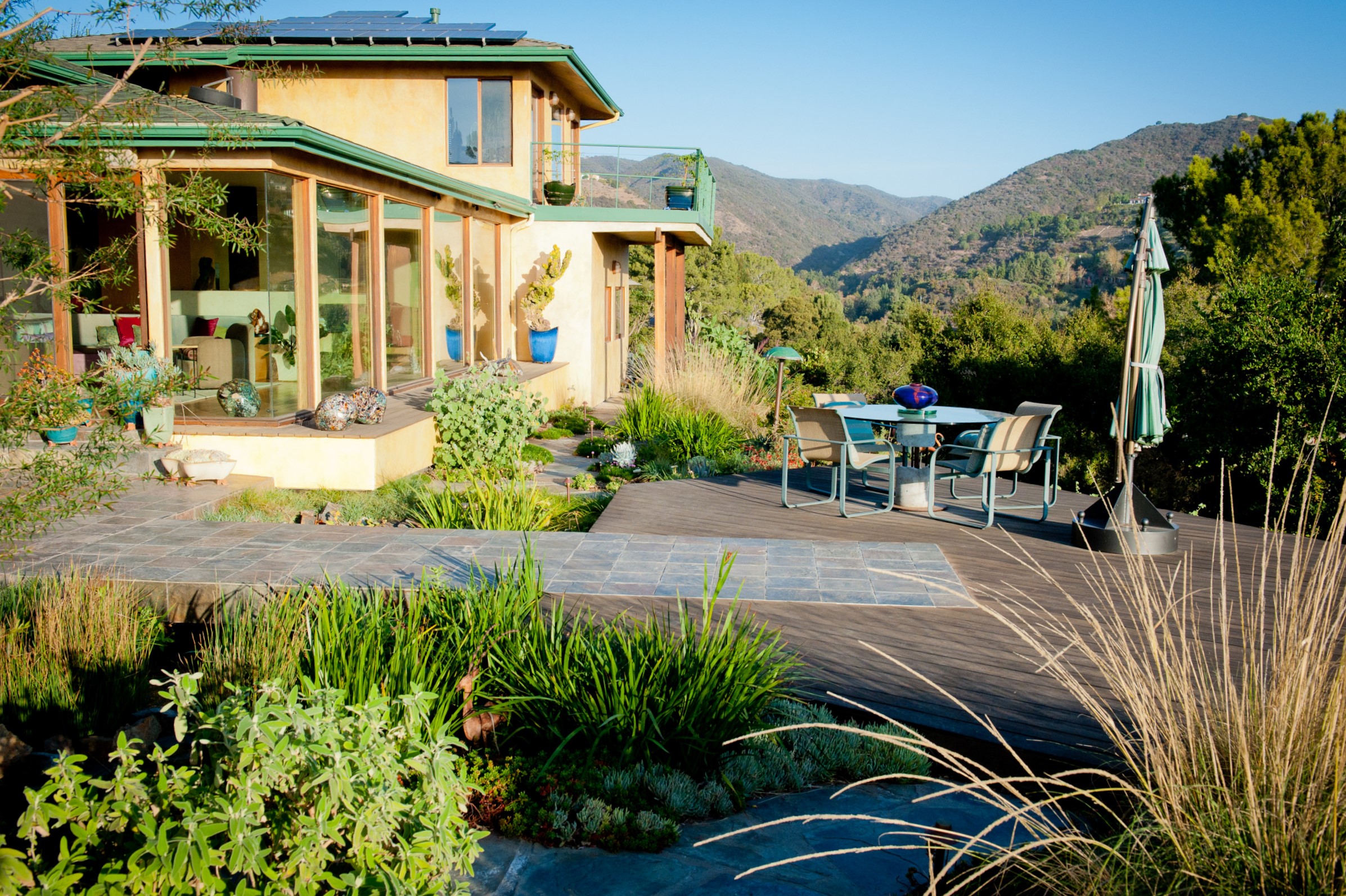
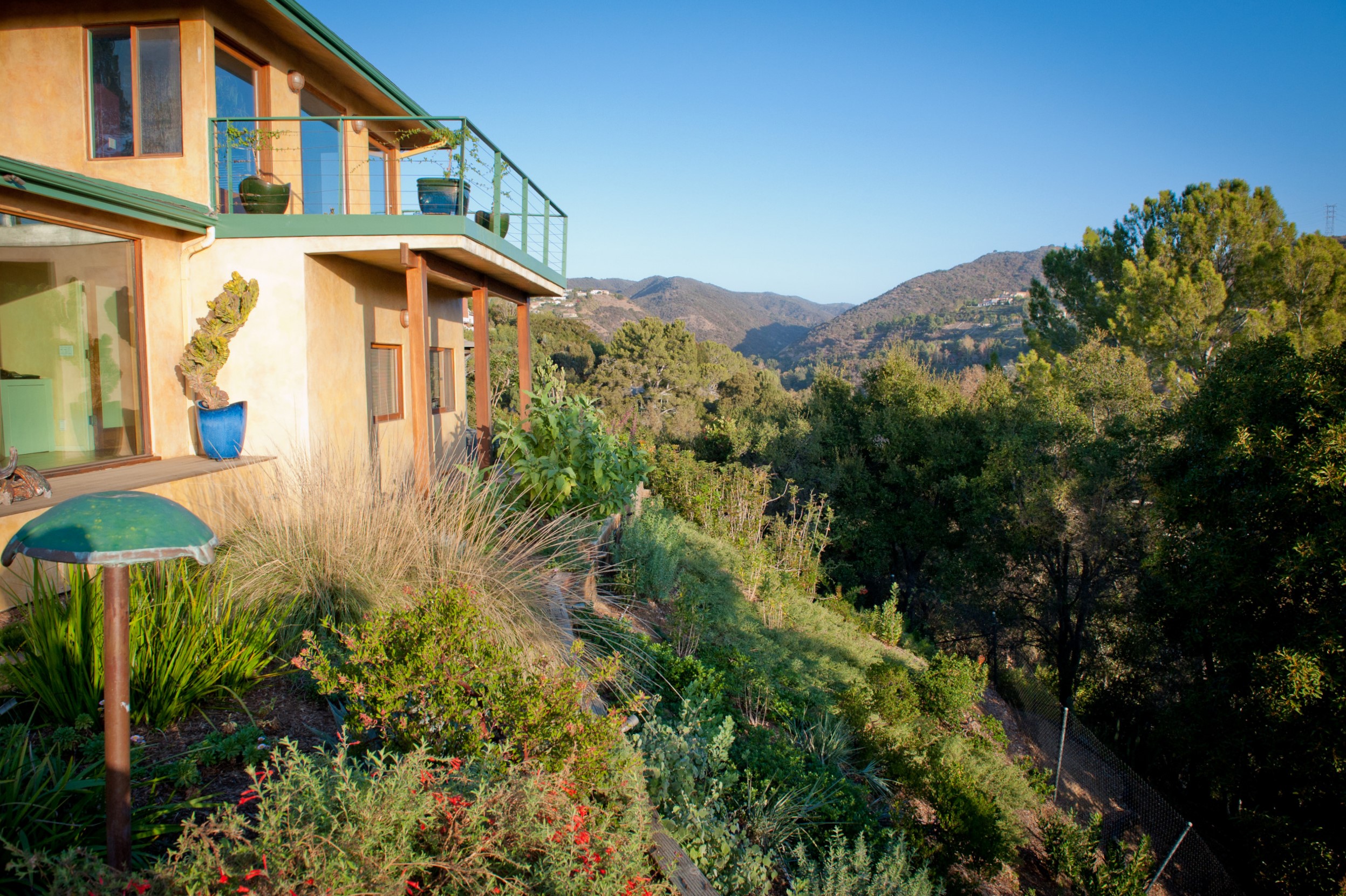
Safety, Peace, and Tranquility in the Valley
In the backyard, FormLA Landscaping used what’s called an IdealMow lawn. Culled from native grasses and beyond-grass alternatives, it’s an alternative to traditional grass lawns and synthetic turf. It’s commonly left to grow much longer, creating a slightly wild setting. IdealMow lawns need much less water and maintenance to thrive, and they can keep the fire resistant landscaping around them moist.
“Not all grasses are created equal,” Aoyagi says. “Some of the non-native grasses like pampas grass and pennisetum fountain grass, in the wild spaces where they escape to because they’re invasive, they dry out in the summertime and they become fine fuels. That’s what can move a fire very, very fast.”
Choosing the right grass is critical. Aoyagi notes: “In California, the state spends millions to remove arson fountain, pampas, and Mexican feather grasses from our wild spaces to combat wildfire. When we plant them in our gardens, we reseed our problems… People ask me, if I were to pick one thing in my yard to become fire safe, what would it be? I immediately respond (particularly in wildland-urban interfaces): Remove the fountain grass and the pampas grass. Those can really deliver fire right to your doorstep.”
At the back of the property, a retaining wall supports an elevated al fresco dining space and hedge-side trail. This creates an additional firebreak between the hedge line, the broader garden, and the home. All around the home itself, a gravel path and concrete patios line the perimeter of the house.
Aoyagi recommends reducing expansive hardscape whenever possible, instead favoring gravel pathways through plant-lined yards. Gravel and decomposed granite paths do provide fire breaks and defensible space where fire-fighters can be safe from trip hazards and fire. But large gravelscapes and intensely hardscaped areas create free-space for embers to fly, bounce, and roll toward homes.
Homeowner Teresa Mackey couldn’t be happier: “My mostly unusable backyard (and front) was transformed into a space of peace and tranquility. Every day I watch bees, butterflies, and bird’s fluttering about enjoying the plants as much as me. Little did I know their vision for my yard included being sensitive to fire safety. Defensible landscaping that holds so much beauty.”
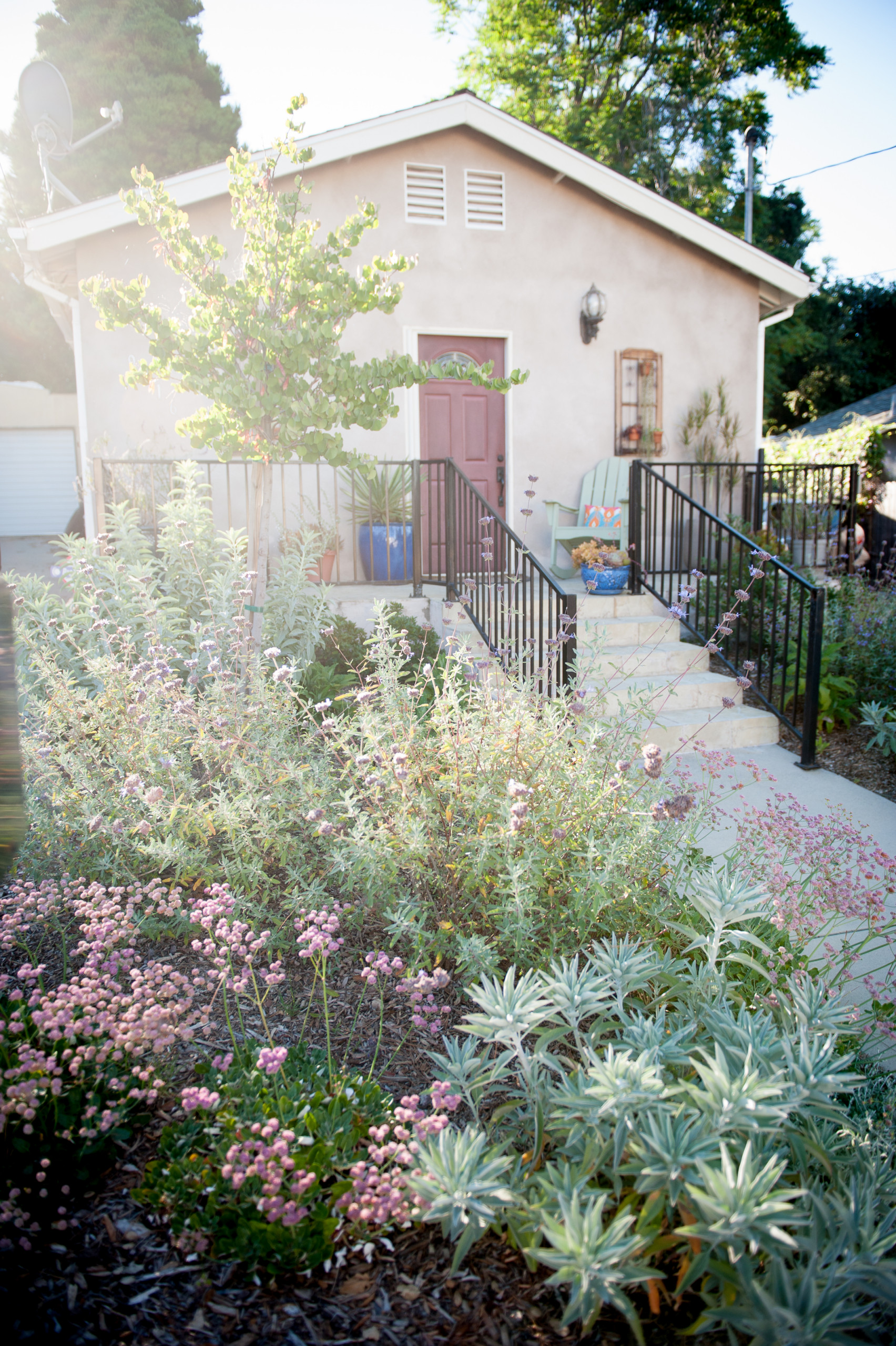
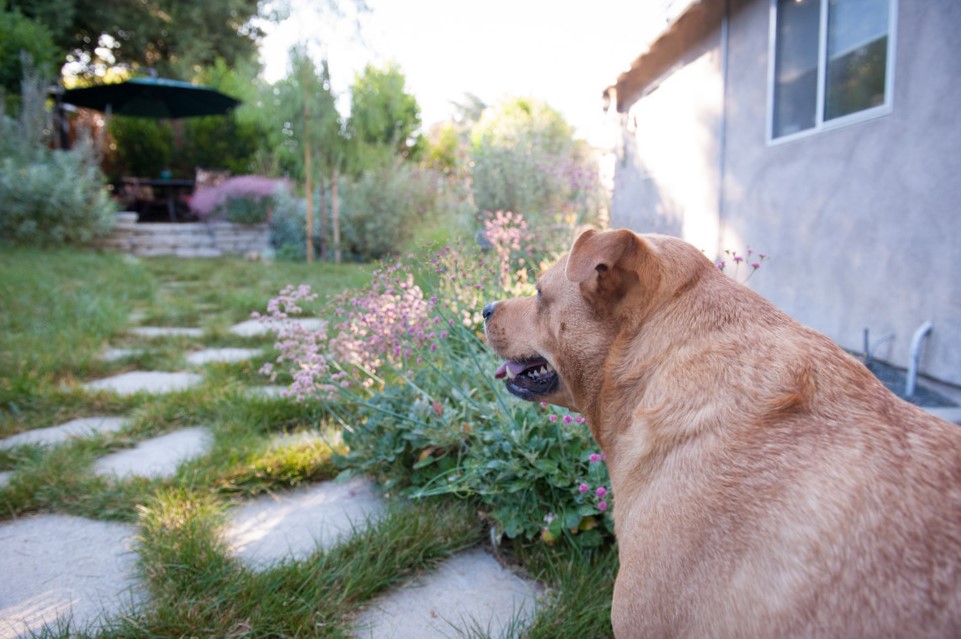
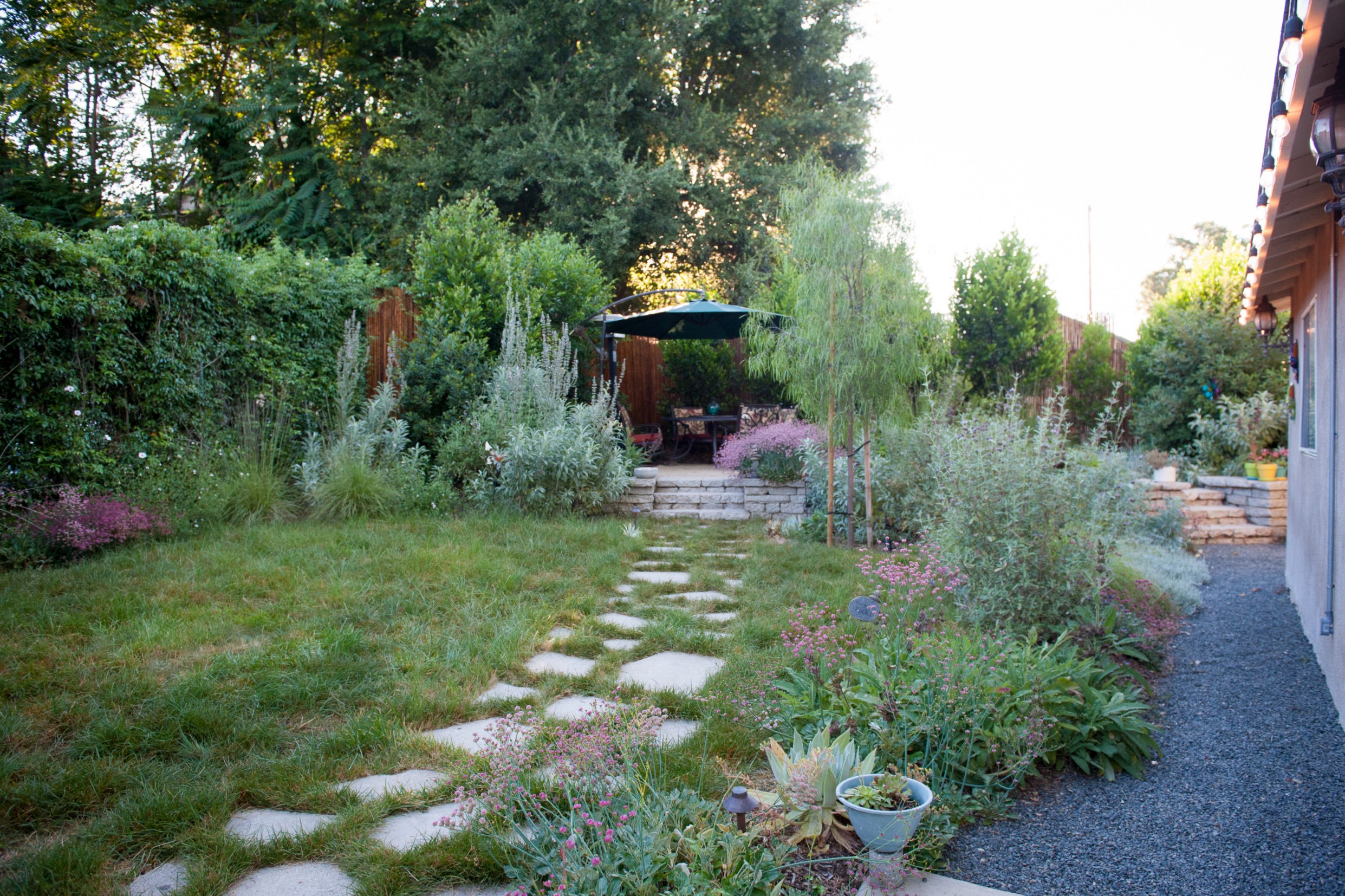
Demonstrating fire resistant landscaping

- Los Angeles Fire Department’s Station 74 in Tujunga
- Sunland Welcome Nature Garden
- Fire Garden in the Authentic Foothill Gardens at Sierra Madre City Hall
- Fire Management Demonstration Garden at Theodore Payne Foundation in Sun Valley
Take your yard from green to green. Visit our Outdoor Living Inspiration page.
.


